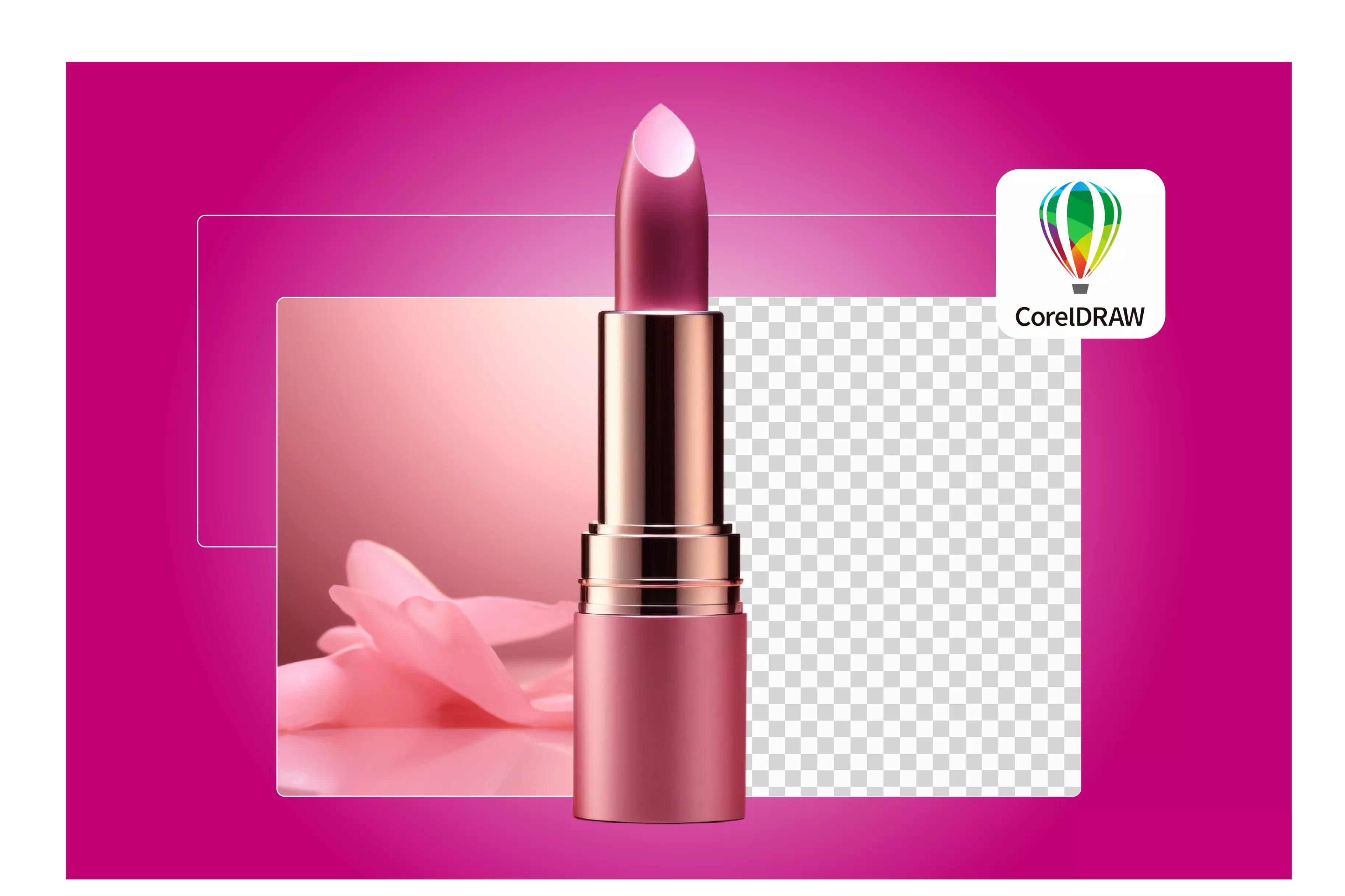Anyone who’s worked with images on a bright white background knows the struggle: you drop the photo into your design, and suddenly the whole thing looks like a bad cutout.
The edges don’t blend, the background sticks out, and it just throws off the whole vibe. Cleaning that white backdrop out is one of those small skills that makes a huge difference, whether you’re doing design work, marketing, or just fixing up pictures for a project.
Photoshop has been the trusty tool for this for ages, and the newer versions only make the job smoother. You still have the old standbys like the Magic Wand for quick fixes and the Pen Tool when you need cleaner, tighter edges.
But now there are smarter selection tools too, the kind that use AI behind the scenes to speed things up without forcing you to do every tiny adjustment by hand. So the idea here is simple: I’ll walk you through a handful of ways to remove the white background so you can pick the one that feels easiest.
Some methods are quick clicks, others give you more control, and a couple embrace newer automatic options. By the time you’re done, you’ll be able to drop your subject onto any background without that obvious white box ruining the look.
Understanding background removal in Photoshop
At its core, background removal means taking out the main subject from the surrounding background so you can either make the background transparent or replace it with something like a different color or a different background. This process involves creating a selection or mask that strictly defines where the subject ends and the background begins.
Difference between removing white vs. complex backgrounds in Photoshop
Removing a white background is usually the easy part, mostly because white is so clean and predictable. When the backdrop is just one bright, even color, Photoshop has no trouble spotting it.
Tools like the Magic Wand or Quick Selection can grab that white area almost instantly, and most of the time, you only need a couple of clicks before the background disappears. Things get trickier when you’re dealing with a busy or complicated background.
The moment there are shadows, patterns, gradients, or a bunch of different colors behind your subject, Photoshop doesn’t automatically know what belongs to the background and what doesn't.
That’s when you end up relying on more careful methods—masking, working through channels, or slowly refining the edges—so you don’t accidentally cut off parts of the subject or leave bits of the background behind. So the big difference really comes down to simplicity versus complexity.
White backgrounds behave, and Photoshop handles them quickly. Complex backgrounds don’t, and they take more time, more patience, and more precise tools to get clean edges, especially around things like hair or textured objects. One is basically a quick chore; the other can feel like a small project of its own.
Common file types that support transparency
To preserve transparent backgrounds after removal, save your images in formats that support alpha channels:
- PNG: Best for web and digital work.
- TIFF: Preferred in professional print workflows with transparency.
- PSD: Photoshop’s native format keeps all editable layers and masks.
Avoid JPEGs if you want transparency, since they don’t support it.
How to remove white background in Photoshop (3 tested methods)
Removing a white background in Photoshop is surprisingly simple once you know the right tools. With a few quick methods, you can cleanly cut out your subject and keep your design looking professional.
Method 1: Using the Magic Wand tool
When you’re working with a plain white background, the Magic Wand is usually the quickest thing to reach for. It basically grabs all the white in one tap, which makes it great for simple photos where the background isn’t doing anything weird. As long as the white is actually white and not full of shadows or tints, it usually snaps right to it without much fuss.
You might still have to nudge the settings a bit so the edges don’t look rough or so it doesn’t miss tiny spots, but it’s nothing complicated. Once it selects everything, you can just delete the background or throw a mask on it—whatever fits the way you like to work.
Steps to know
- Open your image and select the Magic Wand Tool (W) from the toolbar.
- Set the tolerance level between 20 and 32 to control the range of colors selected.
- Click the white background area to select it; hold Shift and click additional white areas if needed.
- Use Select, then Modify, and then Expand by 1-2 pixels to include edge pixels, then feather selection by 0.5-1 px for smoothness.
- Hit Delete or add a Layer Mask to remove or hide the white background.
- Deselect the selection and refine the edges if necessary using Select and Mask.
Method 2: Using the Quick Selection tool
The Quick Selection tool gives you a bit more freedom than the Magic Wand because it behaves almost like a brush, letting you drag across the subject while it figures out the edges for you. It’s handy when the white background isn’t totally even or when you need to add or remove small spots.
The Select and Mask area works well with it, giving you tools to smooth rough spots, soften edges, and fix details, especially around hair, fur, or tricky outlines, too.
Steps to know
- Open your image in Photoshop.
- Select the Quick Selection Tool from the toolbar.
- Adjust the brush size for your selection needs.
- Click and drag over the subject to select it.
- Use “add to selection” or “subtract from selection” to fix the selection.
- Click “select and mask” to refine the edges.
- Use the Refine Edge Brush to clean up tricky areas like hair.
- Adjust Smooth, Feather, Contrast, and Shift Edge sliders.
- Set “Output To” as “Layer Mask” and click OK.
- Use the Brush Tool on the mask to fix any remaining spots.
- Save your image as PNG to keep transparency.
Method 3: Using the Pen tool
The Pen Tool is the best tool to use if you want the background to be clean, especially with a messy background or detailed images. You basically trace around your subject, changing the lines and curves as you go from one key frame to another. It's great for product shots as well.
The Pen Tool takes a little more time and practice than the automatic tools, but it's worth the process, which you will understand once you get the result. You get clean, smooth paths that you can save, change, or use again whenever you want.
Steps to know
- Select the Pen Tool (P) from the toolbar.
- Zoom in closely and click around your subject to add anchor points, dragging to curve lines where needed.
- Continue until the path is closed around the entire subject.
- Open the Paths panel, right-click the path, and choose ‘Make Selection’. Set feather radius to 0.5-1 px for subtle edge softness.
- Add a Layer Mask based on the selection to remove the background nondestructively.
- Refine the mask with a soft brush if needed.
How to remove white background in Photoshop (Most searched queries)
Removing a white background in Photoshop doesn’t have to be tricky. With a few simple methods, you can cleanly cut out your subject and make your images look polished and professional.
4. How to remove white background in Photoshop 2025
Photoshop 2025 makes it way easier to get rid of white backgrounds. You can use buttons like “Select Subject” or “Remove Background,” and it does most of the work for you, picking out the subject without you having to click around forever.
Even though it helps a lot, you can still fix things yourself. The “Select and Mask” section lets you tidy up edges, smooth hair, or remove leftover white bits so your image looks clean. It’s a good mix of quick tools and hands-on control that works whether you’re just starting or have done this a bunch of times.
Steps to know
- Open your image in Photoshop 2025.
- Go to the Properties panel (Window and then Properties).
- Click the “Remove Background” button—Photoshop automatically creates a mask removing most of the white background.
- If the mask requires refinement, click “Select and Mask” from the toolbar.
- Use the Edge Detection Radius slider and the Refine Edge Brush to clean up tricky areas like hair or semi-transparent edges.
- Toggle on Decontaminate Colors to eliminate white halos around your subject.
- Output the mask as a Layer Mask or a new layer with transparency.
- Export the image as PNG or TIFF to preserve the transparent background.
5. How to remove white background in Photoshop 2024
Photoshop 2024 made removing backgrounds easier than before, with better tools for smoothing edges and getting cleaner cutouts. It didn’t have all the AI features that the 2025 version brought, but the manual and semi-automatic options work well for removing white backgrounds. Most people just used the Quick Selection Tool with the Refine Edge brushes to tidy things up, which was usually enough for moderately tricky images.
You could take your time to make selections more precise, smooth out rough edges, and get rid of annoying leftover halos. Once you were happy with it, exporting with a transparent background was simple, so your images were ready for web, print, or whatever project you were working on.
Steps to know
- Open your image and select the Quick Selection Tool.
- Paint over your subject to build a selection; hold Alt/Option to subtract areas accidentally included.
- Click Select and Mask on the options bar to open the workspace for edge refinement.
- Use the Refine Edge Brush Tool to clean up hair, fur, or fuzzy areas.
- Adjust Smooth, Feather, and Shift Edge sliders to perfect edges.
- Output as a Layer Mask for non-destructive editing.
- Export the file as PNG or TIFF to retain transparency for web or print use.
6. How to remove the white background in Photoshop CS6
Photoshop CS6 doesn’t have all the AI features newer versions do, but it’s still a solid program for removing backgrounds if you’re willing to do things the old-fashioned way.
You mostly use tools like the Magic Wand or Pen Tool, along with masks and layers. Getting smooth edges takes a bit more patience, but it’s a good way to really learn how selections and masking work.
Even though it’s more hands-on, you can still get professional-looking results if you take your time. Solid white backgrounds are especially easy to handle, so once you get the hang of it, cutting things out cleanly becomes a lot less frustrating.
Steps to know
- Open your image in Photoshop CS6.
- Use the Magic Wand Tool to select the white background; adjust tolerance as needed.
- Supplement this with manual refinement using the Pen Tool for tricky edges or detailed subjects.
- Convert your Pen Tool path to a selection and refine edges by feathering slightly.
- Add a Layer Mask to hide the white background nondestructively.
- Clean up remaining edge issues with a soft brush on the mask.
- Save your file as PNG or TIFF to preserve transparency, as JPG does not support it.
7. How to remove the white background in Photoshop using channels
Using channels to get rid of a white background in Photoshop is simple when normal selection tools just don’t cut it, like when your subject and background have similar colors or soft edges. Channels basically break the image into black-and-white versions of the color info, so you can see where the subject stands out.
The trick is to find the channel with the most contrast, make it really clear black-and-white, and then turn that into a selection or mask. If you combine that with layer masks, you can get really detailed cutouts, which is especially useful for things with fine textures, hair, or those annoying little halos.
Steps to know
- Open your image and go to the Channels panel.
- Identify the channel (Red, Green, or Blue) with the highest contrast between the subject and white background.
- Duplicate that channel by dragging it to the “New Channel” icon.
- Use Levels or Curves to increase contrast, making the background white and the subject black.
- Paint black or white on this Alpha channel to clean up details manually.
- Ctrl/Cmd+ Click the channel thumbnail to load it as a selection.
- Return to the Layers panel and add a Layer Mask based on this selection.
- Refine the mask using the Select and Mask tools or brush for fine adjustments.
Pro Tips to remember while removing the white background in Photoshop
1. Refining the edges and cleaning the image
- Use the Select and Mask tools and play with Smooth, Feather, Contrast, and Shift Edge to tidy up edges.
- Decontaminate colors to get rid of leftover white fringes.
- Hair, fur, and semi-transparent edges need extra care—zoom in and brush manually if needed.
- Work with layer masks instead of deleting things, so mistakes are easy to fix.
- Check closely for tiny white spots or jagged edges.
2. Adding a new background or creating transparent images
- Save images with transparent backgrounds using PNG so you can use them anywhere.
- Drag in new backgrounds behind your cut-out layer to see how it fits.
- Adjust shadows and lighting so the subject looks natural.
- Always check export settings for web, print, or social media.
3. Automation and batch processing tips
- Use Photoshop actions to speed up the same work across multiple images.
- Try plugins or scripts that make repetitive tasks quicker.
- Keep selections or masks you use often saved for easy reuse.
- Experiment with different tools like Magic Wand, Quick Selection, or Pen Tool to see what works best.
Best Photoshop AI alternative for removing white background—Pixelbin’s AI image background remover
If you just want to get rid of a white background fast without performing tough steps with layers and masks in Photoshop, Pixelbin is a really simple option. It works online, handles both images and videos, and doesn’t need much setup at all. The best part is how easy it is to use — no complicated steps, just upload and go.
With the premium plans, you can remove white backgrounds in batches, which is a huge time-saver if you’ve got hundreds of photos to deal with. Everything runs automatically, but the quality stays solid. Whether you’re a business owner, a designer, or just someone looking to save time, Pixelbin does the job quickly and without the usual Photoshop hassle.
How to use Pixelbin for white background removal
- Go to Pixelbin and open the background remover tool.
- Upload your image by dragging and dropping it into the upload area or browsing your device to select the file. Supported formats include PNG, JPG, JPEG, WEBP, and HEIC.
- The AI automatically detects the subject and removes the white background instantly using advanced algorithms, preserving details such as fine edges, lighting, and shadows with high precision.
- Once satisfied, download the high-resolution image with a transparent background, ready for eCommerce, marketing, social media, or creative projects.
Why did I like it?
- Bulk background removal with accurate results.
- Keeps subjects sharp and detailed.
- Supports automation with API integration.
- Works smoothly with large, high-resolution files.
Final thoughts
If you learn how to remove white backgrounds in Photoshop, you'll be able to edit better. Try a few different ways. The Magic Wand is good for quick fixes, but the Pen Tool is still the best for getting things right. The new AI tools can help you save time if you use Photoshop 2025 or 2026, but you shouldn't rely on them completely.
To keep the background clear, always save your pictures as PNG or TIFF. If you have a lot of pictures, find ways to make your workflow more efficient so you don't have to do the same things over and over.
A thing that you should remember is to try out new tools and get used to them. Using AI tools, like Pixelbin background remover, will help you get better results for removing a white background.
FAQs
Use tools like Magic Wand, Quick Selection, or Pen Tool to select and remove the white area, then save as PNG.
Use the AI-powered “Remove Background” button in the Properties panel for instant results, then refine edges if needed.
Use the Select and Mask workspace with the Quick Selection Tool or channels method combined with manual mask refinement.
Yes, by working non-destructively with masks and saving in transparency-supporting file formats like PNG or TIFF.
Use Select and Mask’s Decontaminate Colors option and refine edge tools to clean halos.
For speed, use Magic Wand or AI-powered Remove Background. For accuracy, use Quick Selection with Select and Mask or the Pen Tool for manual precision.





.webp)






